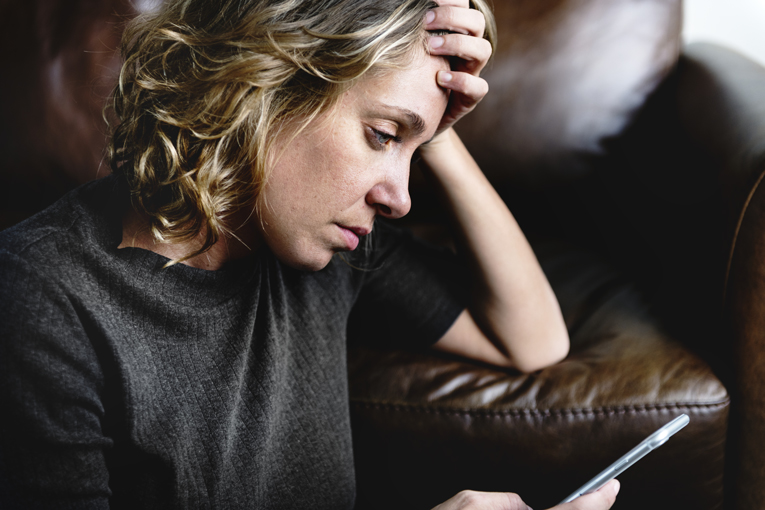Revenge Porn: Should the law punish it as a sex crime?
By Sacha Withey, Dr Don Macfarlane and Tamara Davis (SBP Law)
WARNING: This article may be regarded by many as unpleasant, concerning, and unsettling. Nonetheless, it is our duty to ensure that victims of Revenge Porn are protected within the law.
Summary
Revenge porn is a sexual offence, as classified in Section 33 of the Criminal Justice and Courts Act 2015. If you are accused of revenge porn and found guilty of the criminal offence, you could face a sentence of up to two years in prison.

What is Revenge Porn?
In an age of affordable mobile technology, an intimate picture taken in private can – by quite literally the click of a finger – become public. This has led to the non-consensual sharing of explicit or sexual images or videos, colloquially known as Revenge Porn.
Although victims of Revenge Porn are disproportionally female, it was found that 27% of callers to the Revenge Porn Helpline were actually male.
The wording in the CJCA 2015 emphasises that the sharing of explicit footage must be ‘non-consensual’, that ‘private‘ is defined broadly in that it covers any material that would not usually be viewed by the public, and that ‘sexual’ refers to images or videos that expose the genitals or contain content that a reasonable individual would consider as sexual.
It is essential to acknowledge that the non-consensual sharing of images is a form of sexualised abuse, that enables abusers to maintain a coercive hold over their victims. To perceive it as anything else negates the traumatic suffering that follows.
For example, the possession of the sexually explicit material may be used by the perpetrators in the following manners:
- Blackmail the individual
- To coerce them into continuing a relationship
- Publicly embarrass the victim for ending a relationship
- Silence them with the threat of wide-scale distribution to family, friends and employers
UK surge in ‘Revenge Porn’ during the lockdown
The COVID-19 lockdown has created a surge in the number of people contacting the Revenge Porn Helpline as a communications centre heavily around social media.
Revenge porn was made a specific offence in the Criminal Justice and Courts Act 2015 (the “CJCA”). Despite the abusive invasion of sexual privacy coupled with devastating consequences, this crime carries a maximum sentence of only two years. It is the opinion of the authors that this sentence is practically negligible, given its detrimental effects, including significant emotional and psychological distress.
The tragic case of Alice Ruggles, 24, who was murdered by her boyfriend in 2016 after he threatened to share intimate images of her online, serves as a permanent reminder of the dangers that arise from this abusive crime.
What is the current legal position on revenge porn?
According to the BBC in 2018, 1 in 3 allegations of revenge porn are withdrawn by the complainant before reaching court. Similarly, since revenge porn was made a criminal offence in 2015, 2,813 of 7,806 incidents were chosen not to be supported by their victims. These statistics beg the question; why?
Why when hundreds of calls are made to “Revenge Porn Hotline”, are so few cases successfully prosecuted?
As is typical with sexual crimes, social stigma can heavily influence a victim’s decision to take their perpetrator to court. In this case, victims are often blamed for appearing to bring this upon themselves (i.e. taking the photo) in the first place. These perceptions naturally lead to fears over being ostracised when proceedings become public and help explain these trends.
Furthermore, not only do these attitudes negate that the actual taking of such images by abusers may be non-consensual, they do very little to address that pornography in itself is not a crime – but the non-consensual sharing of it is.
However, it is crucial to distinguish that although the actual taking of such images by abusers may have been non-consensual in the act, there are cases in which the original image was taken in a consensual manner. In this second instance, we must recognise that the pornography in itself is not a crime, but rather the non-consensual distribution of it is. Perhaps if more were to realise this distinction, a higher proportion of victims would feel comfortable in proceeding to a court environment without the potential stigma of shame.
Indeed, the CJCA does not actually require images to contain nudity – the criteria would be met if a victim was fully clothed and posing in a sexually provocative way.
What needs to change and why?
As social media platforms become more accessible, alongside the growing normalisation of ‘sending nudes’ and ‘sexting’, there will likely be a stark increase in Revenge Porn crimes. This may be especially prevalent in minors.
Whilst apps such as Snapchat may create an impression of privacy and trust; the reality is that anything shared via social media is vulnerable as it can quickly become permanent through a screenshot or recording with distributions occurring without the participants’ knowledge.
Imagine the distress caused by getting a call from friends and family when it enters the public domain without your knowledge. From a practical perspective, it is unlikely that people will stop sending intimate images. Therefore, a balance must be struck between enabling young people to have sexual autonomy whilst protecting them from being exploited.
Schools must start prioritising sex-ed for teenagers and focus on these difficult but important issues.
The legislation governing revenge porn should also be examined
Revenge porn is categorised as a communications crime rather than a sexual crime; so victims are not granted anonymity. With the fear of public exposure hanging over their heads, it is hardly surprising that victims are quick to drop charges.
Should revenge porn be interpreted as a sexual crime (which in the authors’ opinion it is), then victims could be given the necessary protections that may help them feel secure in their decision as they are not risking detrimental public exposure when issuing proceedings.
Besides, it should also be noted that pseudo-photographs (i.e. editing someone’s face onto a pornographic image or video) are not included in the legislation. This is a surprising component to exclude when it can have similarly distressing consequences – mainly when adept photoshop skills have been used.
Finally, victims must be supported from the moment they report the crime. Based on the published data, custodial sentences are frequently imposed, suggesting courts regard the crime as a grave offence.
However, a study by the University of Suffolk found that 95% of police offers in 2017 had not received any training on revenge porn legislation. This indicates there are discrepancies within the CJS and signifies the need for a more consistent approach to education and training on sexual violence and abuse.
Key Takeaway
There is a sense of discrepancy between Revenge Porn and the sentence that follows. With the development of technology and social media platforms, non-consensual distribution has never been easier. It is vital that Revenge Porn and its shockingly minimal consequences to the perpetrator are brought to light, with its recognition as a communications crime particularly jarring when considering the imagery in question, like most when asked would place this as a sexual crime.
Further, rather than deny the inevitable sending of such material, there is a need for further education within schools, not solely to display the negative consequences upon a victim’s reputation – which does nothing but further the potential stigma of shame – but rather to educate those on how they can successfully prosecute and take back control of their material. Again, this education must include the judiciary and education must start within the school’s system.
If you believe you have become victims of this crime, you can report the incident to the police. They are responsible for investigating any credible allegations. Then, the Crown Prosecution Service will decide whether anyone should be prosecuted.
If you plan to take legal actions other than criminal proceedings or claim for compensation, please contact one of our expert sexual offence solicitors.
If you or anyone you know has been affected by any of the issues in this article, you can find support at:
https://revengepornhelpline.org.uk/
https://www.victimsupport.org.uk/crime-info/types-crime/cyber-crime/image-based-sexual-abuse
https://www.thecyberhelpline.com/guides/revenge-porn
https://www.womensaid.ie/services/helpline.html










